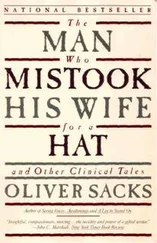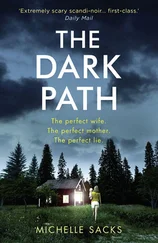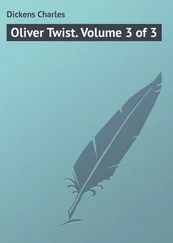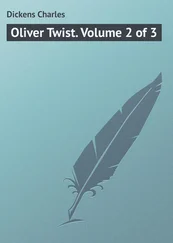I would take the stuff on Friday evenings after getting back from work and would then spend the whole weekend so high that images and thoughts would become rather like controllable hallucinations, imbued with ecstatic emotion. I often devoted these “drug holidays” to romantic daydreaming, but one Friday, in February 1967, while I was exploring the rare book section of the medical library, I found a hefty volume on migraine entitled On Megrim, Sick-Headache, and Some Allied Disorders: A Contribution to the Pathology of Nerve-Storms , written in 1873 by one Edward Liveing, MD. I had been working for several months in the migraine clinic, and I was fascinated by the range of symptoms and phenomena that could occur in migraine attacks. These attacks often included an aura, a prodrome in which aberrations of perception and even hallucinations occurred. They were entirely benign and would last only a few minutes, but those few minutes provided a window onto the functioning of the brain and how it could break down and then reintegrate. In this way, I felt, every attack of migraine opened out into an encyclopedia of neurology.
I had read dozens of articles about migraine and its possible basis, but none of them seemed to present the full richness of its phenomenology or the range and depth of suffering which patients might experience. It was in the hope of finding a fuller, deeper, and more human approach to migraine that I took out Liveing’s book from the library that weekend. So, after downing my bitter draft of amphetamine — heavily sugared to make it more palatable — I started reading. As the amphetamine effect took hold of me, stimulating my emotions and imagination, Liveing’s book seemed to increase in intensity and depth and beauty. I wanted nothing but to enter Liveing’s mind and imbibe the atmosphere of the time in which he had worked.
In a sort of catatonic concentration so intense that in ten hours I scarcely moved a muscle or wet my lips, I read steadily through the five hundred pages of Megrim . As I did so, it seemed to me almost as if I were becoming Liveing himself, actually seeing the patients he described. At times I was unsure whether I was reading the book or writing it. I felt myself in the Dickensian London of the 1860s and ’70s. I loved Liveing’s humanity and social sensitivity, his strong assertion that migraine was not some indulgence of the idle rich but could affect those who were poorly nourished and worked long hours in ill-ventilated factories. In this way, his book reminded me of Mayhew’s great study of London’s working classes, but equally, one could tell how well Liveing had been trained in biology and the physical sciences, and what a master of clinical observation he was. I found myself thinking, This represents the best of mid-Victorian science and medicine; it is a veritable masterpiece! The book gave me what I had been hungering for during the months that I had been seeing patients with migraine, frustrated by the thin, impoverished articles which seemed to constitute the modern “literature” on the subject. At the height of this ecstasy, I saw migraine shining like an archipelago of stars in the neurological heavens.
But a century had passed since Liveing worked and wrote in London. Rousing myself from my reverie of being Liveing or one of his contemporaries, I came to and said to myself, Now it is the 1960s, not the 1860s. Who could be the Liveing of our time? A disingenuous clutter of names spoke themselves in my mind. I thought of Dr. A. and Dr. B. and Dr. C. and Dr. D., all of them good men but none of them with that mix of science and humanism that was so powerful in Liveing. And then a very loud internal voice said, “You silly bugger! You’re the man!”
On every previous occasion when I had come down after two days of amphetamine-induced mania, I had experienced a severe reaction in the other direction, feeling an almost narcoleptic drowsiness and depression. I would also have an acute sense of folly, thinking that I had endangered my life for nothing — amphetamines in the large doses I took would give me a sustained pulse rate close to 200 and a blood pressure of I know not what; several people I knew had died from overdoses of amphetamines. I would feel that I had made a crazy ascent into the stratosphere but had come back empty-handed and had nothing to show for it; that the experience had been as empty and vacuous as it was intense. This time, though, when I came down, I retained a sense of illumination and insight; I had had a sort of revelation about migraine. I had a sense of resolution, too, that I was indeed equipped to write a Liveing-like book, that perhaps I could be the Liveing of our time.
The next day, before I returned Liveing’s book to the library, I photocopied the whole thing. Then, bit by bit, I started to write my own book. The joy I got from doing this was real — infinitely more substantial than the vapid mania of amphetamines — and I never took amphetamines again.
7. Patterns: Visual Migraines
I have had migraines for most of my life; the first attack I remember occurred when I was three or four years old. I was playing in the garden when a shimmering light appeared to my left, dazzlingly bright. It expanded, becoming an enormous arc stretching from the ground to the sky, with sharp, glittering, zigzagging borders and brilliant blue and orange colors. Then behind the brightness came a growing blindness, an emptiness in the field of vision, and soon I could see almost nothing on my left side. I was terrified — what was happening? My sight returned to normal in a few minutes, but these were the longest minutes I had ever experienced.
I told my mother what had happened, and she explained to me that what I had had was a migraine aura — a feeling or sensation that precedes a migraine; she was a doctor, and she too was a “migraineur.” It was a visual migraine aura, and the characteristic zigzag shape, she would later tell me, resembled that of medieval forts, so it was often called a fortification pattern. Many people, she said, would get a terrible headache after seeing the aura.
I was lucky to be one of those people who got only the aura without the headache, and lucky, too, to have a mother who could reassure me that everything would be back to normal within a few minutes, and with whom, as I got older, I could share my migraine experiences. She explained that auras like mine were due to a sort of electrical disturbance like a wave passing across the visual parts of the brain. A similar “wave” could pass over other parts of the brain, too, she said, so one might get a strange feeling on one side of the body or experience an odd smell or find oneself temporarily unable to speak. A migraine might affect one’s perception of color or depth or movement, might make the whole visual world unintelligible for a few minutes. Then, if one were unlucky, the rest of the migraine would follow: violent headaches, vomiting, painful sensitivity to light and noise, abdominal disturbances, and a host of other symptoms. 38 38 A migraine headache often occurs on only one side (hence the term, which derives from the Greek for “hemi” and “cranium”). But it can also be on both sides, and can range from a dull or throbbing ache to excruciating pain, as J. C. Peters described in his 1853 A Treatise on Headache: The character of the pains varied very much; most frequently they were of a hammering, throbbing or pushing nature.… [in other cases] pressing and dull … boring with sense of bursting … pricking … rending … stretching … piercing … and radiating.… In a few cases it felt as if a wedge was pressed into the head, or like an ulcer, or as if the brain was torn, or pressed outwards.
Migraine was common, my mother said, affecting at least 10 percent of the population. Its classic visual presentation is a scintillating, zigzag-edged, kidney-shaped form like the one I saw, expanding and moving slowly across one half of the visual field over the course of fifteen or twenty minutes. Inside the shimmering borders of this shape is often a blind area, a scotoma — thus the whole shape is called a scintillating scotoma.
Читать дальше












